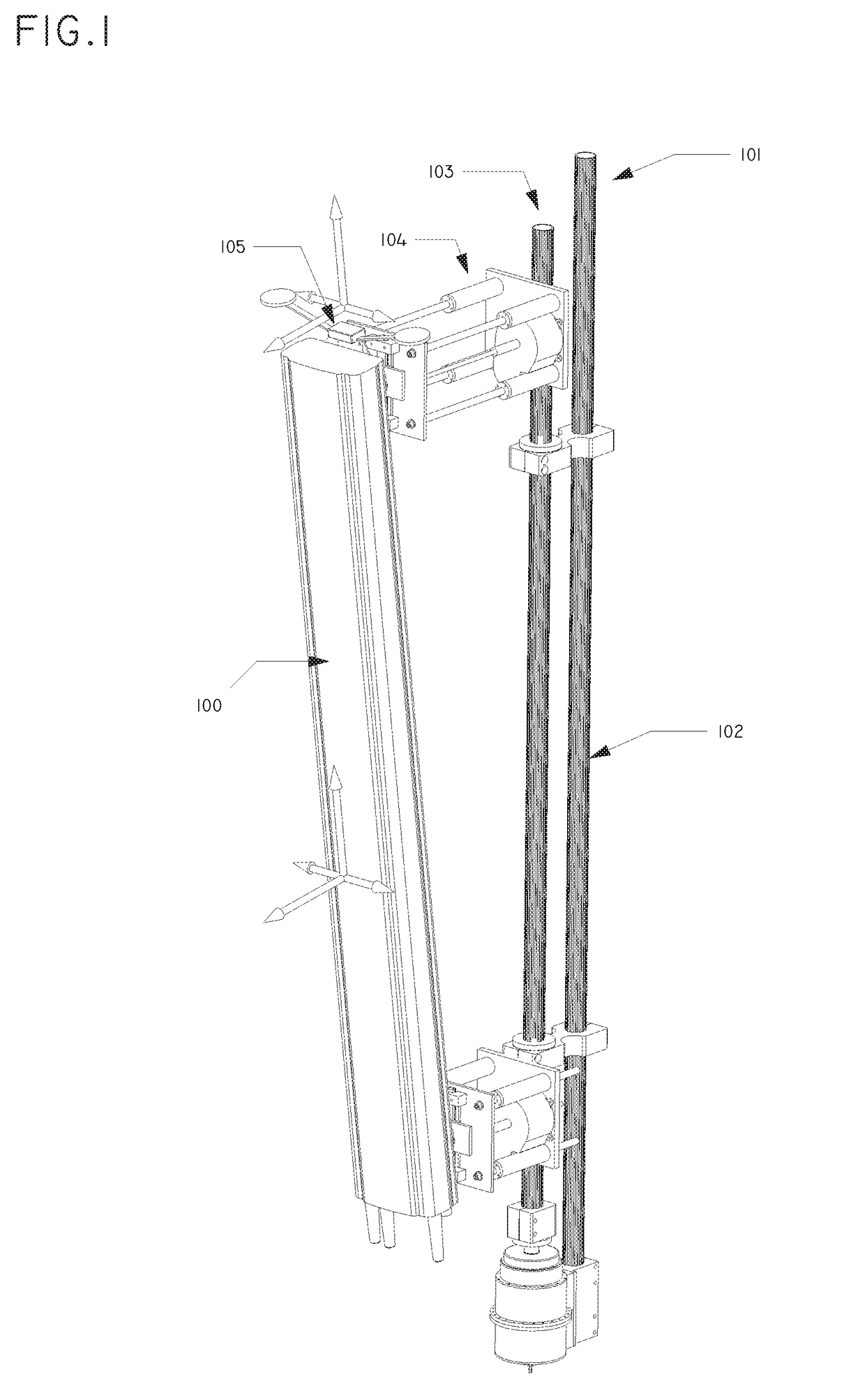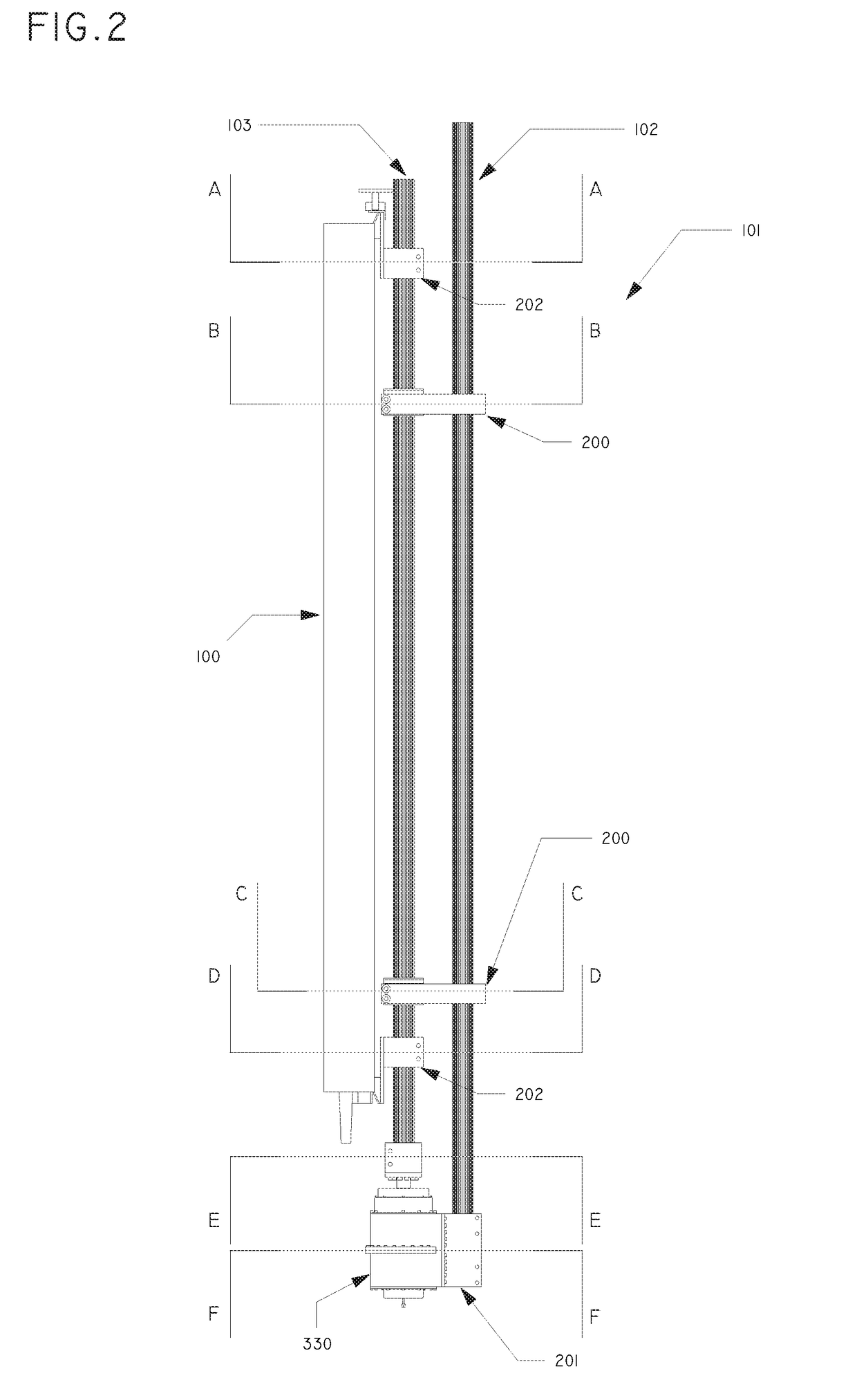Two-way antenna mounting bracket and assembly with independently adjustable electromechanical antenna tilt and azimuthal steering for beam reshaping
a technology of electromechanical antenna tilt and azimuthal steering and antenna mounting bracket, which is applied in the direction of antennas, antenna details, electrical equipment, etc., can solve the problems of skewed antenna radiation footprint coverage, dangerous adjustments, labor intensive and cost-intensive, etc., and achieve accurate network coverage, fast and reliable mobile broadband connections, and increase system capacity
- Summary
- Abstract
- Description
- Claims
- Application Information
AI Technical Summary
Benefits of technology
Problems solved by technology
Method used
Image
Examples
Embodiment Construction
[0056]In the following description of the present invention reference is made to the exemplary embodiments illustrating the principles of the present invention and how it is practiced. Other embodiments will be utilized to practice the present invention and structural and functional changes will be made thereto without departing from the scope of the present invention. The accompanying drawings, which are incorporated in and constitute a part of this specification, illustrate several embodiments of the invention and together with the description, serve to explain the principles of the invention.
[0057]FIG. 1 illustrates a perspective view of an antenna array 100 mounted on a two-way antenna mounting bracket assembly 101 according to an exemplary implementation of the present invention. The two-way antenna mounting bracket assembly 101 comprises a stationary backbone pole 102 that is attached to a mounting support structure using bottom and top mounting brackets, an electromechanical ...
PUM
 Login to View More
Login to View More Abstract
Description
Claims
Application Information
 Login to View More
Login to View More - R&D
- Intellectual Property
- Life Sciences
- Materials
- Tech Scout
- Unparalleled Data Quality
- Higher Quality Content
- 60% Fewer Hallucinations
Browse by: Latest US Patents, China's latest patents, Technical Efficacy Thesaurus, Application Domain, Technology Topic, Popular Technical Reports.
© 2025 PatSnap. All rights reserved.Legal|Privacy policy|Modern Slavery Act Transparency Statement|Sitemap|About US| Contact US: help@patsnap.com



